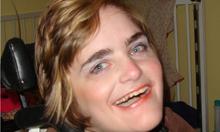Children and Youth in Foster Care
Data from the National Child Abuse and Neglect Data System (NCANDS) indicate that 27.5% of children in foster care have a diagnosed disability,1 and more than 80% of children in foster care have serious health care needs, including behavioral, emotional and developmental concerns.2 Due to the increased risk for and prevalence of health issues, virtually all children in foster care, even the healthiest, meet the Maternal and Child Health Bureau definition of a child with special health care needs: those who have or are at increased risk for a chronic physical, developmental, behavioral, or emotional condition and who also require health and related services of a type or amount beyond that required by children generally.3
State Title V Maternal and Child Health (MCH) and CYSHCN programs can play a significant role in improving the system of coverage and care for this group of vulnerable children. Some of the ways in which Title V programs are currently doing so include leading or participating in initiatives related to medical home, benefits counseling, child abuse and neglect prevention, service quality monitoring and measurement, and transition.
The Catalyst Center has developed several resources that address the health care coverage and financing needs of this specific population of children and youth with special health care needs:
- Financing the Special Health Care Needs of Children and Youth in Foster Care: A Primer (Sept. 2012)
This primer includes descriptions of the foster care population and their special health care needs, the types of out-of-home placements children may experience, a synopsis of the funding, federal legislation and key players of the child welfare system; important elements in providing comprehensive health care for children in foster care; steps that federal and state officials have taken to improve the system of health care for children in foster care and examples of programs and models of providing health care services for children in foster care. - It’s Not Hard, It Just Takes Time: Community Clinic Closes Gaps in Health Care for Children in Foster Care (March 2012)
This case study explores how the Key Clinic in Bangor, Maine worked with state agencies, foster parents, and other providers to build a system of care for children and youth in foster care. - Children in Foster Care are Children with Special Health Care Needs (Nov. 2011)
A brief description of why the availability of Medicaid coverage alone is not enough to ensure that children in foster care receive the services they need. - A Spotlight on the Special Health Care Needs of Children in Foster Care (July 2011)
Originally appearing in the 2011 summer edition of the Catalyst Center enewsletter, this article describes the current state of coverage and financing for children and youth in foster care and lists several key resources for additional information.
1U.S. Department of Health and Human Services, Administration for Children and Families, Administration on Children, Youth and Families, Children’s Bureau. (2010). National child abuse and neglect data system (NCANDS) child file, FFY 2009 [Dataset]. Retrieved July 28, 2011 from the National Data Archive on Child Abuse and Neglect Web site, http://www.ndacan.cornell.edu
2Ringeisen, C., Urato, M., & Cross. T. (2008). Special health care needs among children in the child welfare system. Pediatrics 2008;122;e232.
3McPherson M, Arango P, Fox H, Lauver C, McManus M, Newacheck P, Perrin J, Shonkoff J, Strickland B. (1998). A new definition of children with special health care needs. Pediatrics, 102(1):137–140, pg. 138.
Additional Resources
- Financing the Special Health Care Needs of Children in Foster Care: A Primer
- Risk Adjustment and Other Financial Protections for Children with Special Health Care Needs in Our Evolving Health Care System
- Public Insurance Programs and Children with Special Health Care Needs: A Tutorial on the Basics of Medicaid and the Children's Health Insurance Program (CHIP)
- The Massachusetts Child Psychiatry Access Project: Combining Innovation and Collaboration to Enhance Children's Mental Health Services in the Primary Care Setting [PDF]
- Dancing with Data: Using data to support your message
- Video: Bridging the gaps for families of children with special health care needs: RI Pediatric Practice Enhancement Project
- Just the Facts: The 411 on Health Insurance for Young Adults Ages 18 - 30 in Florida

